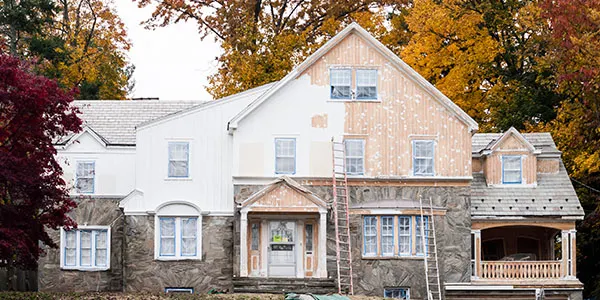As more homeowners embrace sustainability in 2025, eco-friendly renovations have become one of the most powerful ways to reduce environmental impact while improving comfort and efficiency. Whether you’re planning a full remodel or a few strategic updates, making your home greener can save energy, cut costs, and boost property value — all while protecting the planet.
In this article, we’ll explore the best eco-friendly renovation tips that help you create a sustainable, energy-efficient, and healthy home for the future.
🌞 1. Install Solar Panels for Clean Energy
Switching to solar energy is one of the most effective ways to make your home sustainable. By installing solar panels, you can generate your own electricity, reduce your carbon footprint, and protect yourself from rising utility costs.
☀️ Benefits:
- Reduce electricity bills by up to 70%
- Lower CO₂ emissions
- Qualify for government incentives and tax credits
- Increase your home’s resale value
Pair your panels with solar batteries and smart inverters to store excess energy and power your home day and night.
🏠 2. Improve Insulation and Seal Air Leaks
A well-insulated home uses less energy to stay comfortable year-round. Poor insulation allows heat to escape in winter and cool air to leak out in summer — driving up energy bills and emissions.
🧱 Sustainable Insulation Options:
- Recycled denim or cellulose insulation
- Sheep’s wool and cork
- Spray foam made from soy-based materials
Also, seal gaps around doors, windows, and vents to reduce energy loss and improve indoor air quality.
💡 3. Switch to Energy-Efficient Lighting and Appliances
Traditional incandescent bulbs and outdated appliances consume excessive power. Replacing them with energy-efficient alternatives is one of the easiest ways to go green.
⚡ Upgrades to Consider:
- LED lighting — uses up to 85% less energy
- Energy Star-rated appliances for kitchens and laundry
- Smart thermostats for automated temperature control
- Low-energy HVAC systems with programmable settings
These upgrades offer immediate savings and long-term sustainability.
🚿 4. Save Water with Eco-Friendly Fixtures
Water conservation is just as important as energy efficiency. Installing low-flow fixtures and water-saving systems can significantly reduce water consumption without sacrificing comfort.
💧 Water-Saving Tips:
- Dual-flush toilets and aerated faucets
- Low-flow showerheads
- Rainwater harvesting systems for gardens
- Greywater recycling for landscape irrigation
Small plumbing changes can cut your water usage by up to 50%.
🌿 5. Use Sustainable and Recycled Materials
When renovating, the materials you choose can make a huge environmental difference. Opting for recycled, renewable, and locally sourced products reduces waste and carbon emissions from manufacturing and transportation.
🧩 Eco-Friendly Material Choices:
- Bamboo or reclaimed wood flooring
- Recycled glass or composite countertops
- Non-toxic, low-VOC paints and finishes
- Natural stone or clay tiles
These materials are durable, beautiful, and kinder to the environment.
🪟 6. Maximize Natural Light and Ventilation
Harnessing natural resources is the foundation of sustainable design. Increasing daylight and airflow not only reduces energy usage but also improves mental well-being and indoor comfort.
🌞 Smart Design Tips:
- Add larger windows or skylights to brighten interiors
- Use light-colored walls and reflective surfaces to enhance brightness
- Install ventilation fans or operable windows for natural airflow
Design your home to work with nature — not against it.
🪴 7. Create a Green Outdoor Space
Eco-friendly living extends beyond your home’s walls. Your outdoor space can become a sustainable oasis that supports biodiversity and reduces environmental strain.
🌳 Green Landscaping Ideas:
- Plant native trees and shrubs that require less water
- Install drip irrigation systems
- Use compost instead of chemical fertilizers
- Add solar-powered garden lights
Sustainable landscaping not only looks great but also supports a healthy local ecosystem.
🧰 8. Reuse, Recycle, and Repurpose Materials
Before tearing everything down, look at what you already have. Reusing materials is one of the most budget-friendly and sustainable renovation strategies.
♻️ Examples:
- Refinish old furniture instead of replacing it
- Repurpose wood from old doors or cabinets
- Donate unused materials to recycling centers or charities
- Buy reclaimed fixtures from eco-friendly suppliers
Reducing waste is one of the easiest ways to go green during renovation.
🔋 9. Consider Smart Energy Management
Smart home technology can make your home more efficient and sustainable by automating energy usage and reducing waste.
📱 Smart Eco Upgrades:
- Smart thermostats and plugs
- Solar monitoring systems
- Motion-activated lighting
- Smart irrigation for water control
These tools give you real-time insight into your energy habits — helping you make smarter, greener choices.
🪜 10. Choose Local and Sustainable Contractors
When selecting renovation professionals, look for green-certified or sustainability-focused contractors. Local teams reduce transportation emissions and often use eco-friendly materials and methods.
✅ What to Look For:
- LEED-certified or eco-conscious builders
- Experience with renewable energy systems
- Transparent waste management and recycling practices
Partnering with sustainable contractors ensures your renovation stays aligned with your eco goals.
✅ Key Takeaways
- Eco-friendly renovations reduce your carbon footprint and save money long-term.
- Focus on solar power, insulation, and energy-efficient upgrades first.
- Use sustainable materials and smart technology to modernize your home responsibly.
- Green renovations increase comfort, health, and property value.
🌎 Final Thoughts
Going green isn’t just a trend — it’s a responsibility. By making eco-friendly renovation choices, you’re investing in a home that’s healthier for your family and better for the planet.
From installing solar panels to using recycled materials and smart energy systems, every small step contributes to a sustainable future. Your home can be both beautiful and eco-conscious — proving that sustainability and style go hand in hand.

